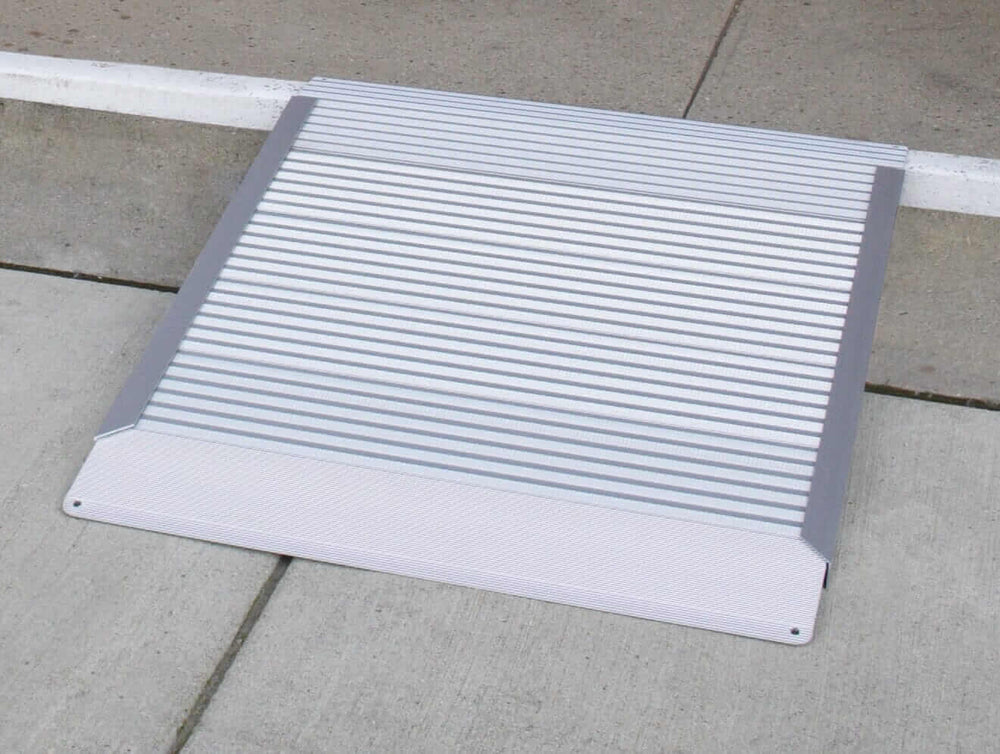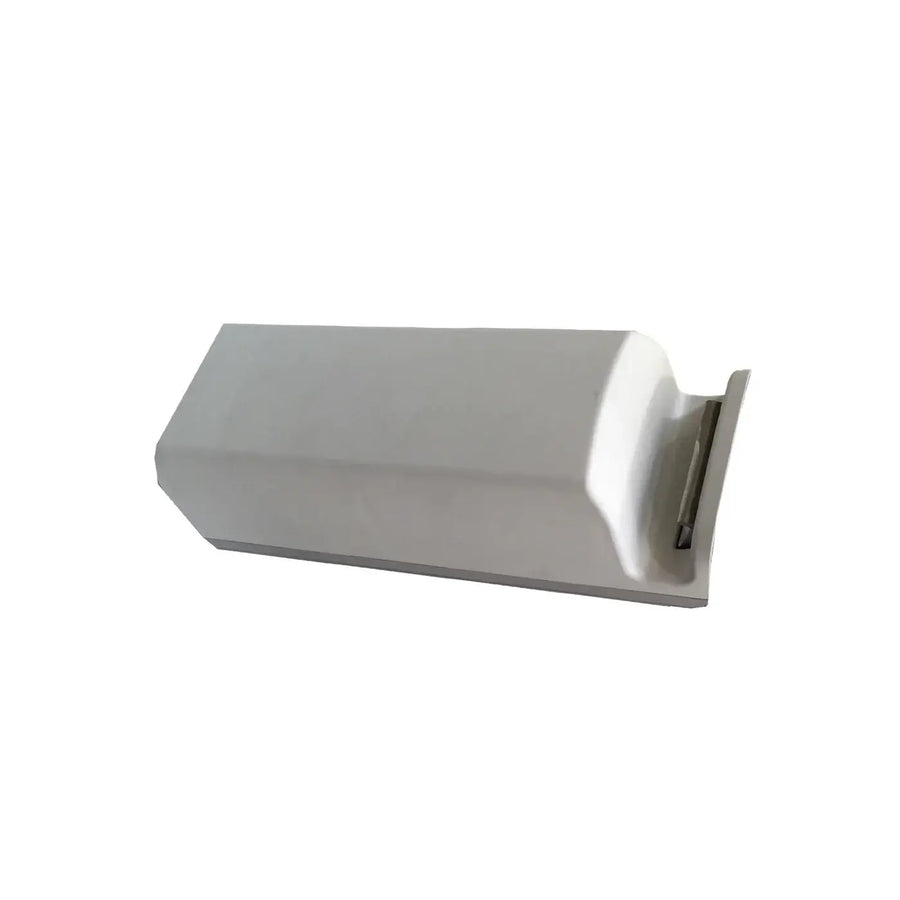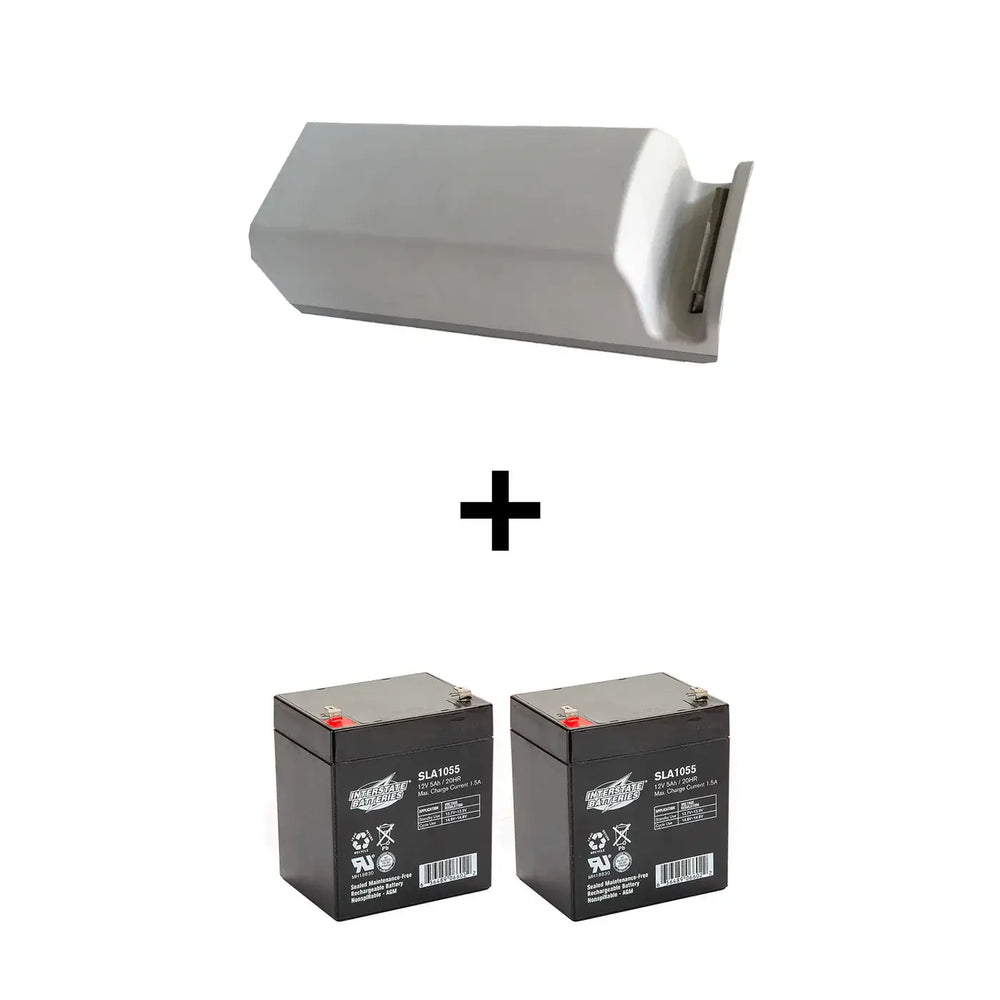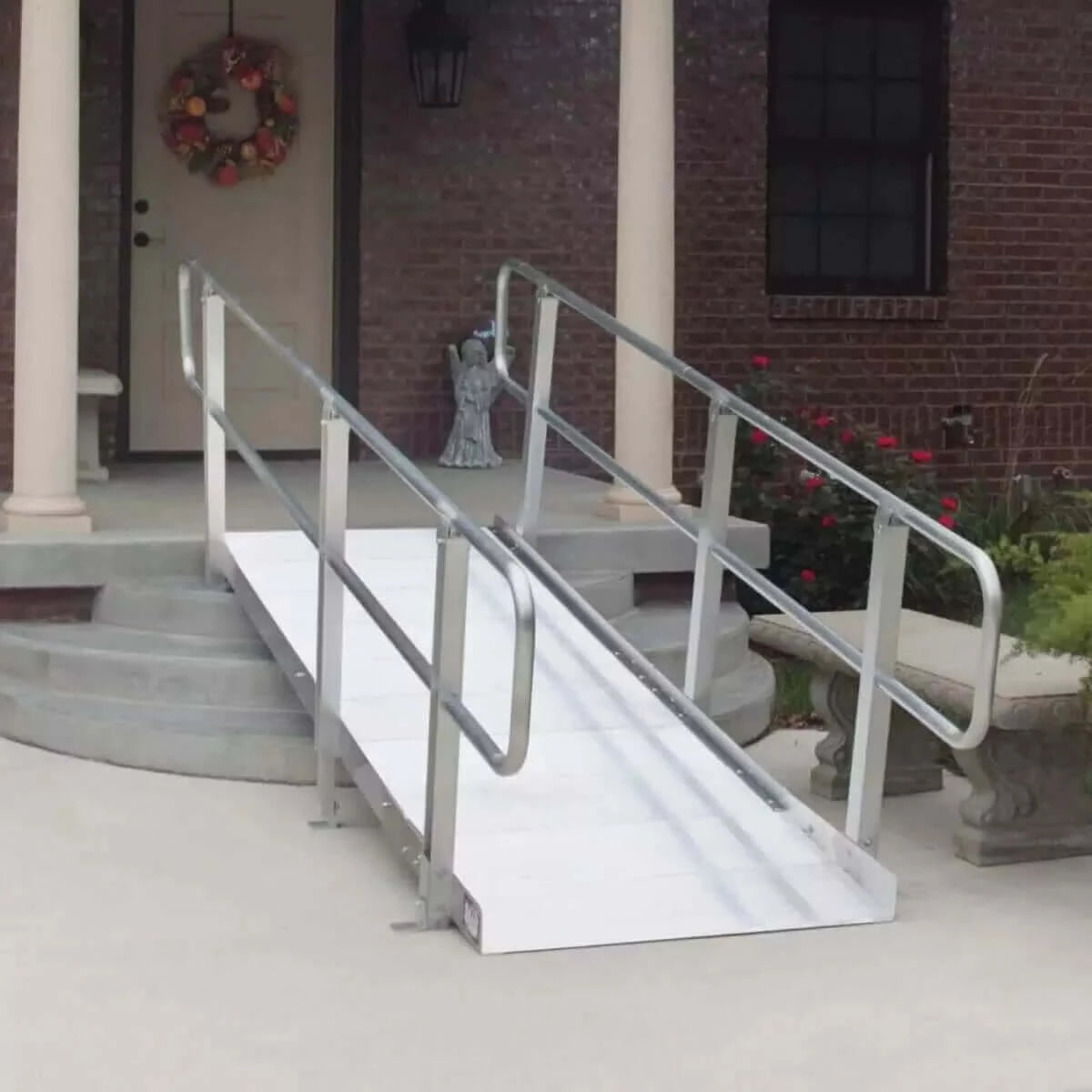What Degree Should a Wheelchair Ramp Be?
Introduction
Ramps designed for wheelchairs and other mobility aids are integral to preserving accessibility, whether in your home or workplace. Various settings and applications require specific ramp slopes, and this is often the most common question asked for those seeking to invest in a new ramp.
Selecting the right ramp that aligns with your needs is crucial, as an ill-fitting design can introduce unwelcome inconveniences and even hazards for individuals with mobility challenges.
In this blog, we will discuss the significance of choosing the correct ramp slope, delving into essential guidelines, considerations, and practical insights to ensure each ramp serves its intended purpose safely and efficiently.
Table of Contents
The Reliable Ramps Slope Guide
Whether you're a wheelchair user, caregiver, or contractor, choosing the right ramp slope is crucial for safe and convenient accessibility. Our guide tailors recommendations to your unique needs, considering factors like wheelchair type, user strength, and space constraints. It's essential to use your judgment to determine the ideal slope, prioritizing safety and comfort while relying on our guidance for your informed accessibility solutions.


Ideal Slope for Wheelchair Ramps - ADA Guidelines
The ADA guidelines for wheelchair ramps are primarily designed for commercial settings. However, even in residential contexts, following these guidelines, to the extent possible, is advisable for safety. Adhering to similar standards in your home can provide the safest solution, particularly if you're unsure about the optimal slope for your ramp. Prioritizing accessibility and safety within reason can ensure a comfortable and secure environment for everyone.
To ensure that your wheelchair ramp meets safety and accessibility standards, it's helpful to refer to the guidelines provided by the Americans with Disabilities Act (ADA). While the ADA primarily outlines standards for public areas, you can use these recommendations as valuable guidance when constructing a ramp for your home.
Calculating The Slope
Calculating the slope of a wheelchair ramp is quite simple. To do this, you need to determine the rise (height) and the run (length) of the ramp. Then, you divide the rise by the run.

For example, if your ramp rises 6 inches and is 36 inches long, you'd divide 6 by 36 to get 0.1667. To express this as a ratio, you can say the slope is 1:6, meaning for every 1 inch of rise, the ramp extends 6 inches long. The smaller this number, the gentler the slope, making it easier for wheelchair users to navigate comfortably.
Factors to Consider when Determining The Slope of Your Ramp.
- User Ability: Assess the physical abilities of the wheelchair user, as some may require a gentler slope for ease of use. Be sure to consult the Slope Guide for general guidelines.
- Ramp Length: Longer ramps can accommodate steeper slopes, but space limitations may affect the overall length.
- Regulations: Familiarize yourself with local building codes and ADA guidelines for maximum slope allowances. Residential ramps aren't required to abide by the ADA guidelines, but it's best practice to do so.
- Ramp Purpose: Consider whether the ramp is for occasional use or daily access, which can impact the preferred slope.
- Environmental Conditions: Evaluate weather conditions in your area, as steeper slopes may be more challenging in snow or rain.
- Available Space: The available space may limit your ramp's length and thus affect the slope. Be sure to consult with our Reliable Team if you don't think there's enough space to use a sufficiently sloped ramp.
- User Comfort: Prioritize the comfort and safety of the user, choosing a slope that ensures a smooth and stable ride.
- Wheelchair Type: Different wheelchairs may have varying capabilities, so the ramp slope should accommodate the specific wheelchair being used.
- User Preferences: Consult with the wheelchair user to understand their comfort and preferences regarding the ramp slope.
- Budget and Materials: The materials used for the ramp can affect the slope, so consider your budget and available construction materials if you're planning on building the ramp. If you plan on buying a ramp, the most Reliable materials we recommend are Aluminum and Fiberglass, as well as High Quality Rubber Threshold Ramps.
- Future Needs: Anticipate any potential changes in the user's needs or equipment that may impact the ramp's slope.
- Aesthetics and Integration: Think about how the ramp design integrates with your home or building aesthetics while maintaining functionality.
Common Mistakes To Avoid
- Ignoring Local Regulations: Failing to research and adhere to local building codes and accessibility guidelines can result in an unsafe and non-compliant ramp.
- Neglecting User Needs: Not considering the specific needs and abilities of the wheelchair user can lead to a ramp that's either too steep or unnecessarily long.
- Overlooking Space Constraints: Building a ramp that's too long for the available space can create an impractical and potentially hazardous design.
- Incorrect Measurement: Errors in measuring the rise and run can result in an inaccurate slope calculation, impacting the usability of the ramp. Always measure twice!
- Inadequate Materials: Choosing low-quality or inappropriate materials can affect the ramp's durability and usability over time. We recommend aluminum, fiberglass and rubber ramps as your most reliable options.
- Neglecting Safety Features: Forgetting to include essential safety features like handrails and non-slip surfaces can compromise user safety.
- Underestimating Weather Considerations: Failing to account for weather conditions in your region may lead to a ramp that's difficult to use in rain, snow, or ice.
- Not Seeking Professional Advice: If you have ANY questions, please don't hesitate to contact our Reliable Team, and they'll be happy to help!
- Ignoring Future Needs: Not considering potential changes in the user's needs or equipment can result in a ramp that quickly becomes inadequate.
- Prioritizing Aesthetics Over Functionality: Overly focusing on the appearance of the ramp at the expense of functionality can lead to design choices that hinder usability.
Conclusion
The importance of choosing the right slope for wheelchair ramps cannot be overstated. Whether it's for your home, workplace, or any other setting, these ramps are vital for maintaining accessibility and ensuring the well-being of individuals with mobility challenges. The question of what degree a wheelchair ramp should be is a common one, and for a good reason. A well-suited design can greatly enhance convenience and safety, while a poorly chosen slope may lead to inconveniences and potential hazards. We addressed the significance of selecting the correct ramp slope, offering valuable guidelines, considerations, and practical insights to help you make informed decisions and ensure that each ramp fulfills its intended purpose safely and efficiently.
Let Us Know What You Think!
Your thoughts and questions are incredibly valuable to us, and we'd love to hear from you. If you have additional insights to share, your comments can spark meaningful discussions and enhance the collective knowledge of our community. Don't hesitate to ask any questions you may have; our team is here to provide answers and engage with you. So, please, take a moment to leave a comment or question below. Your input is much appreciated!












Leave a comment